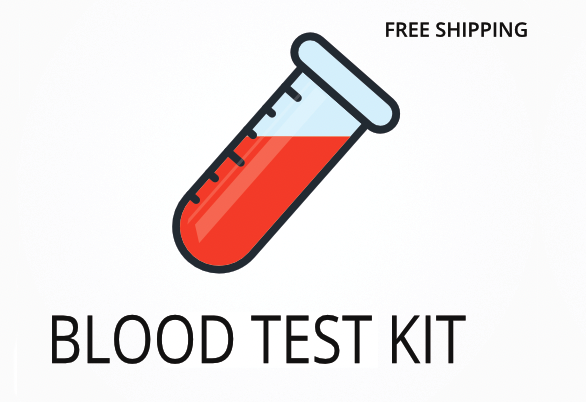| Test Name | Reference Range | Significance | High Levels of 190 IgG Food Allergy Test with Candida & Yeast | Blood Test |
|---|---|---|---|
| Dairy | |||
| Beta-Lactoglobulin | 0-1.0 | Beta-lactoglobulin is a protein found in cow’s milk. High levels may indicate a delayed immune response to dairy products. | High levels of Beta-Lactoglobulin mean your immune system is reacting to this milk protein, which may cause digestive or skin symptoms. |
| Cow’s Milk | 0-1.0 | Cow’s milk is a common trigger for food sensitivities. This marker helps identify immune reactions to milk. | High levels of Cow’s Milk mean your body may react to cow’s milk, possibly causing bloating, rashes, or headaches. |
| Sheep’s Yogurt | 0-1.0 | Sheep’s yogurt contains different proteins than cow’s milk. This test can help identify if you react to alternative dairy sources. | High levels of Sheep’s Yogurt mean you may have a sensitivity to sheep’s milk products, which can cause digestive upset. |
| Casein | 0-1.0 | Casein is a major milk protein. Sensitivity to casein can cause symptoms even if lactose is tolerated. | High levels of Casein mean your immune system may react to casein, leading to symptoms like congestion or skin issues. |
| Goat’s Milk | 0-1.0 | Goat’s milk is often used as a cow’s milk alternative. This marker checks for immune reactions to goat’s milk proteins. | High levels of Goat’s Milk mean you may react to goat’s milk, which can cause similar symptoms as cow’s milk sensitivity. |
| Whey | 0-1.0 | Whey is another milk protein. Sensitivity to whey can cause digestive or skin symptoms. | High levels of Whey mean your immune system may react to whey, possibly causing bloating or rashes. |
| Cheddar Cheese | 0-1.0 | Cheddar cheese contains both casein and whey. This marker helps identify if cheese is a trigger food. | High levels of Cheddar Cheese mean you may react to cheddar cheese, which can cause digestive or skin symptoms. |
| Mozzarella Cheese | 0-1.0 | Mozzarella is a soft cheese with different protein content. This test checks for immune reactions to mozzarella. | High levels of Mozzarella Cheese mean you may have a sensitivity to mozzarella, which can cause bloating or congestion. |
| Yogurt | 0-1.0 | Yogurt contains live cultures and milk proteins. This marker helps identify if yogurt is a problem food. | High levels of Yogurt mean your immune system may react to yogurt, possibly causing digestive upset or skin issues. |
| Fish / Seafood | |||
| Abalone | 0-1.0 | Abalone is a shellfish. This marker checks for immune reactions to abalone, which can cause digestive or skin symptoms. | High levels of Abalone mean you may react to abalone, which can cause stomach pain or rashes. |
| Lobster | 0-1.0 | Lobster is a common shellfish allergen. This test helps identify delayed immune reactions to lobster. | High levels of Lobster mean your immune system may react to lobster, possibly causing digestive upset or hives. |
| Sardine | 0-1.0 | Sardines are oily fish. This marker checks for immune responses to sardines, which can cause symptoms after eating fish. | High levels of Sardine mean you may react to sardines, which can cause stomach pain or headaches. |
| Anchovy | 0-1.0 | Anchovies are used in many dishes. This test checks for immune reactions to anchovies, which can cause digestive or skin symptoms. | High levels of Anchovy mean your immune system may react to anchovies, possibly causing bloating or rashes. |
| Octopus | 0-1.0 | Octopus is a less common seafood. This marker helps identify if octopus is a trigger for delayed reactions. | High levels of Octopus mean you may react to octopus, which can cause digestive upset or headaches. |
| Scallop | 0-1.0 | Scallops are shellfish. This test checks for immune responses to scallops, which can cause symptoms after eating seafood. | High levels of Scallop mean your immune system may react to scallops, possibly causing stomach pain or rashes. |
| Bass | 0-1.0 | Bass is a freshwater fish. This marker helps identify if bass is a trigger for delayed immune reactions. | High levels of Bass mean you may react to bass, which can cause digestive upset or headaches. |
| Oyster | 0-1.0 | Oysters are shellfish. This test checks for immune responses to oysters, which can cause symptoms after eating seafood. | High levels of Oyster mean your immune system may react to oysters, possibly causing stomach pain or rashes. |
| Shrimp | 0-1.0 | Shrimp is a common allergen. This marker helps identify delayed immune reactions to shrimp. | High levels of Shrimp mean you may react to shrimp, which can cause digestive upset or hives. |
| Fruits | |||
| Acai Berry | 0-1.0 | Acai berry is a tropical fruit. This marker checks for immune reactions to acai, which can cause digestive or skin symptoms. | High levels of Acai Berry mean you may react to acai berry, which can cause stomach pain or rashes. |
| Fig | 0-1.0 | Fig is a sweet fruit. This test checks for immune responses to figs, which can cause symptoms after eating fruit. | High levels of Fig mean your immune system may react to figs, possibly causing digestive upset or headaches. |
| Papaya | 0-1.0 | Papaya is a tropical fruit. This marker helps identify if papaya is a trigger for delayed reactions. | High levels of Papaya mean you may react to papaya, which can cause digestive upset or headaches. |
| Apple | 0-1.0 | Apple is a common fruit. This test checks for immune responses to apples, which can cause symptoms after eating fruit. | High levels of Apple mean your immune system may react to apples, possibly causing stomach pain or rashes. |
| Grape | 0-1.0 | Grapes are used in many foods. This marker helps identify if grapes are a trigger for delayed immune reactions. | High levels of Grape mean you may react to grapes, which can cause digestive upset or headaches. |
| Passion Fruit | 0-1.0 | Passion fruit is a tropical fruit. This test checks for immune responses to passion fruit, which can cause symptoms after eating fruit. | High levels of Passion Fruit mean your immune system may react to passion fruit, possibly causing stomach pain or rashes. |
| Apricot | 0-1.0 | Apricot is a stone fruit. This marker helps identify if apricot is a trigger for delayed reactions. | High levels of Apricot mean you may react to apricot, which can cause digestive upset or headaches. |
| Grapefruit | 0-1.0 | Grapefruit is a citrus fruit. This test checks for immune responses to grapefruit, which can cause symptoms after eating fruit. | High levels of Grapefruit mean your immune system may react to grapefruit, possibly causing stomach pain or rashes. |
| Peach | 0-1.0 | Peach is a stone fruit. This marker helps identify if peach is a trigger for delayed immune reactions. | High levels of Peach mean you may react to peach, which can cause digestive upset or headaches. |
| Vegetables | |||
| Artichoke | 0-1.0 | Artichoke is a fiber-rich vegetable. This marker checks for immune reactions to artichoke, which can cause digestive or skin symptoms. | High levels of Artichoke mean you may react to artichoke, which can cause stomach pain or rashes. |
| Celery | 0-1.0 | Celery is a common vegetable. This test checks for immune responses to celery, which can cause symptoms after eating vegetables. | High levels of Celery mean your immune system may react to celery, possibly causing digestive upset or headaches. |
| Potato | 0-1.0 | Potato is a starchy vegetable. This marker helps identify if potato is a trigger for delayed reactions. | High levels of Potato mean you may react to potato, which can cause digestive upset or headaches. |
| Asparagus | 0-1.0 | Asparagus is a green vegetable. This test checks for immune responses to asparagus, which can cause symptoms after eating vegetables. | High levels of Asparagus mean your immune system may react to asparagus, possibly causing stomach pain or rashes. |
| Chili Pepper | 0-1.0 | Chili pepper is a spicy vegetable. This marker helps identify if chili pepper is a trigger for delayed immune reactions. | High levels of Chili Pepper mean you may react to chili pepper, which can cause digestive upset or headaches. |
| Pumpkin | 0-1.0 | Pumpkin is a squash vegetable. This test checks for immune responses to pumpkin, which can cause symptoms after eating vegetables. | High levels of Pumpkin mean your immune system may react to pumpkin, possibly causing stomach pain or rashes. |
| Avocado | 0-1.0 | Avocado is a fatty fruit often used as a vegetable. This marker helps identify if avocado is a trigger for delayed reactions. | High levels of Avocado mean you may react to avocado, which can cause digestive upset or headaches. |
| Cucumber | 0-1.0 | Cucumber is a hydrating vegetable. This test checks for immune responses to cucumber, which can cause symptoms after eating vegetables. | High levels of Cucumber mean your immune system may react to cucumber, possibly causing stomach pain or rashes. |
| Radish | 0-1.0 | Radish is a root vegetable. This marker helps identify if radish is a trigger for delayed immune reactions. | High levels of Radish mean you may react to radish, which can cause digestive upset or headaches. |
| Herbs / Spices | |||
| Basil | 0-1.0 | Basil is a common herb. This marker checks for immune reactions to basil, which can cause digestive or skin symptoms. | High levels of Basil mean you may react to basil, which can cause stomach pain or rashes. |
| Curry | 0-1.0 | Curry is a blend of spices. This test checks for immune responses to curry, which can cause symptoms after eating spicy foods. | High levels of Curry mean your immune system may react to curry, possibly causing digestive upset or headaches. |
| Paprika | 0-1.0 | Paprika is a spice made from peppers. This marker helps identify if paprika is a trigger for delayed reactions. | High levels of Paprika mean you may react to paprika, which can cause digestive upset or headaches. |
| Bay Leaf | 0-1.0 | Bay leaf is used in cooking. This test checks for immune responses to bay leaf, which can cause symptoms after eating certain dishes. | High levels of Bay Leaf mean your immune system may react to bay leaf, possibly causing stomach pain or rashes. |
| Dill | 0-1.0 | Dill is a herb used in pickling and cooking. This marker helps identify if dill is a trigger for delayed immune reactions. | High levels of Dill mean you may react to dill, which can cause digestive upset or headaches. |
| Rosemary | 0-1.0 | Rosemary is a fragrant herb. This test checks for immune responses to rosemary, which can cause symptoms after eating certain foods. | High levels of Rosemary mean your immune system may react to rosemary, possibly causing stomach pain or rashes. |
| Black Pepper | 0-1.0 | Black pepper is a common spice. This marker helps identify if black pepper is a trigger for delayed reactions. | High levels of Black Pepper mean you may react to black pepper, which can cause digestive upset or headaches. |
| Ginger | 0-1.0 | Ginger is a root spice. This test checks for immune responses to ginger, which can cause symptoms after eating spicy foods. | High levels of Ginger mean your immune system may react to ginger, possibly causing stomach pain or rashes. |
| Sage | 0-1.0 | Sage is a herb used in cooking. This marker helps identify if sage is a trigger for delayed immune reactions. | High levels of Sage mean you may react to sage, which can cause digestive upset or headaches. |
| Meat / Fowl, Beans / Peas, Grains | |||
| Beef | 0-1.0 | Beef is a red meat. This marker checks for immune reactions to beef, which can cause digestive or skin symptoms. | High levels of Beef mean you may react to beef, which can cause stomach pain or rashes. |
| Chicken | 0-1.0 | Chicken is a common protein. This test checks for immune responses to chicken, which can cause symptoms after eating poultry. | High levels of Chicken mean your immune system may react to chicken, possibly causing digestive upset or headaches. |
| Duck | 0-1.0 | Duck is a type of poultry. This marker helps identify if duck is a trigger for delayed reactions. | High levels of Duck mean you may react to duck, which can cause digestive upset or headaches. |
| Egg White | 0-1.0 | Egg white contains proteins that can trigger immune responses. This test checks for reactions to egg white. | High levels of Egg White mean your immune system may react to egg white, possibly causing stomach pain or rashes. |
| Egg Yolk | 0-1.0 | Egg yolk contains different proteins than egg white. This marker helps identify if egg yolk is a trigger for delayed reactions. | High levels of Egg Yolk mean you may react to egg yolk, which can cause digestive upset or headaches. |
| Goose | 0-1.0 | Goose is a type of poultry. This test checks for immune responses to goose, which can cause symptoms after eating poultry. | High levels of Goose mean your immune system may react to goose, possibly causing stomach pain or rashes. |
| Lamb | 0-1.0 | Lamb is a red meat. This marker helps identify if lamb is a trigger for delayed immune reactions. | High levels of Lamb mean you may react to lamb, which can cause digestive upset or headaches. |
| Pork | 0-1.0 | Pork is a common protein. This test checks for immune responses to pork, which can cause symptoms after eating meat. | High levels of Pork mean your immune system may react to pork, possibly causing stomach pain or rashes. |
| Turkey | 0-1.0 | Turkey is a lean protein. This marker helps identify if turkey is a trigger for delayed reactions. | High levels of Turkey mean you may react to turkey, which can cause digestive upset or headaches. |
| Nuts / Seeds | |||
| Almond | 0-1.0 | Almond is a tree nut. This marker checks for immune reactions to almonds, which can cause digestive or skin symptoms. | High levels of Almond mean you may react to almonds, which can cause stomach pain or rashes. |
| Hazelnut | 0-1.0 | Hazelnut is a tree nut. This test checks for immune responses to hazelnuts, which can cause symptoms after eating nuts. | High levels of Hazelnut mean your immune system may react to hazelnuts, possibly causing digestive upset or headaches. |
| Pistachio | 0-1.0 | Pistachio is a tree nut. This marker helps identify if pistachio is a trigger for delayed reactions. | High levels of Pistachio mean you may react to pistachio, which can cause digestive upset or headaches. |
| Brazil Nut | 0-1.0 | Brazil nut is a tree nut. This test checks for immune responses to Brazil nuts, which can cause symptoms after eating nuts. | High levels of Brazil Nut mean your immune system may react to Brazil nuts, possibly causing stomach pain or rashes. |
| Hemp Seed | 0-1.0 | Hemp seed is a plant-based protein. This marker helps identify if hemp seed is a trigger for delayed immune reactions. | High levels of Hemp Seed mean you may react to hemp seed, which can cause digestive upset or headaches. |
| Pumpkin Seed | 0-1.0 | Pumpkin seed is a common snack. This test checks for immune responses to pumpkin seeds, which can cause symptoms after eating seeds. | High levels of Pumpkin Seed mean your immune system may react to pumpkin seeds, possibly causing stomach pain or rashes. |
| Cashew | 0-1.0 | Cashew is a tree nut. This marker helps identify if cashew is a trigger for delayed reactions. | High levels of Cashew mean you may react to cashew, which can cause digestive upset or headaches. |
| Macadamia Nut | 0-1.0 | Macadamia nut is a tree nut. This test checks for immune responses to macadamia nuts, which can cause symptoms after eating nuts. | High levels of Macadamia Nut mean your immune system may react to macadamia nuts, possibly causing stomach pain or rashes. |
| Sesame Seed | 0-1.0 | Sesame seed is a common allergen. This marker helps identify if sesame seed is a trigger for delayed immune reactions. | High levels of Sesame Seed mean you may react to sesame seed, which can cause digestive upset or headaches. |
| Miscellaneous | |||
| Bromelain | 0-1.0 | Bromelain is an enzyme from pineapple. This marker checks for immune reactions to bromelain, which can cause digestive or skin symptoms. | High levels of Bromelain mean you may react to bromelain, which can cause stomach pain or rashes. |
| Coffee | 0-1.0 | Coffee is a common beverage. This test checks for immune responses to coffee, which can cause symptoms after drinking it. | High levels of Coffee mean your immune system may react to coffee, possibly causing stomach pain or headaches. |
| Oolong Tea | 0-1.0 | Oolong tea is a type of tea. This marker helps identify if oolong tea is a trigger for delayed reactions. | High levels of Oolong Tea mean you may react to oolong tea, which can cause digestive upset or headaches. |
| Candida Albicans | 0-1.0 | Candida albicans is a yeast that can overgrow in the gut. This marker checks for immune responses to Candida. | High levels of Candida Albicans mean your immune system may react to Candida, possibly causing digestive upset or fatigue. |
| Green Tea | 0-1.0 | Green tea is a popular beverage. This marker helps identify if green tea is a trigger for delayed immune reactions. | High levels of Green Tea mean you may react to green tea, which can cause digestive upset or headaches. |
| Yeast | 0-1.0 | Yeast is used in baking and brewing. This test checks for immune responses to yeast, which can cause symptoms after eating bread or beer. | High levels of Yeast mean your immune system may react to yeast, possibly causing bloating or rashes. |
| Cane Sugar | 0-1.0 | Cane sugar is a sweetener. This marker helps identify if cane sugar is a trigger for delayed reactions. | High levels of Cane Sugar mean you may react to cane sugar, which can cause digestive upset or headaches. |
| Honey | 0-1.0 | Honey is a natural sweetener. This test checks for immune responses to honey, which can cause symptoms after eating it. | High levels of Honey mean your immune system may react to honey, possibly causing stomach pain or rashes. |
| Cocoa Bean | 0-1.0 | Cocoa bean is used in chocolate. This marker helps identify if cocoa is a trigger for delayed immune reactions. | High levels of Cocoa Bean mean you may react to cocoa bean, which can cause digestive upset or headaches. |
| Meat Glue | 0-1.0 | Meat glue is used in processed foods. This test checks for immune responses to meat glue, which can cause symptoms after eating processed meats. | High levels of Meat Glue mean your immune system may react to meat glue, possibly causing stomach pain or rashes. |
Medical Review Board
Reviewed by Jeff Donohue M.D. from Body Logic and Brady Hurst DC, CCCN. Written by True Health Lab’s team of editorial health contributors.
Disclaimer: This information is for educational purposes only and not intended as medical advice. Consult your healthcare provider for personalized guidance.
Why Customers Trust True Health Labs - What People are saying
Also rated 4.6 out of 5 based on 3452 ShopperApproved reviews- See all TrueHealthLabs.com reviews.









